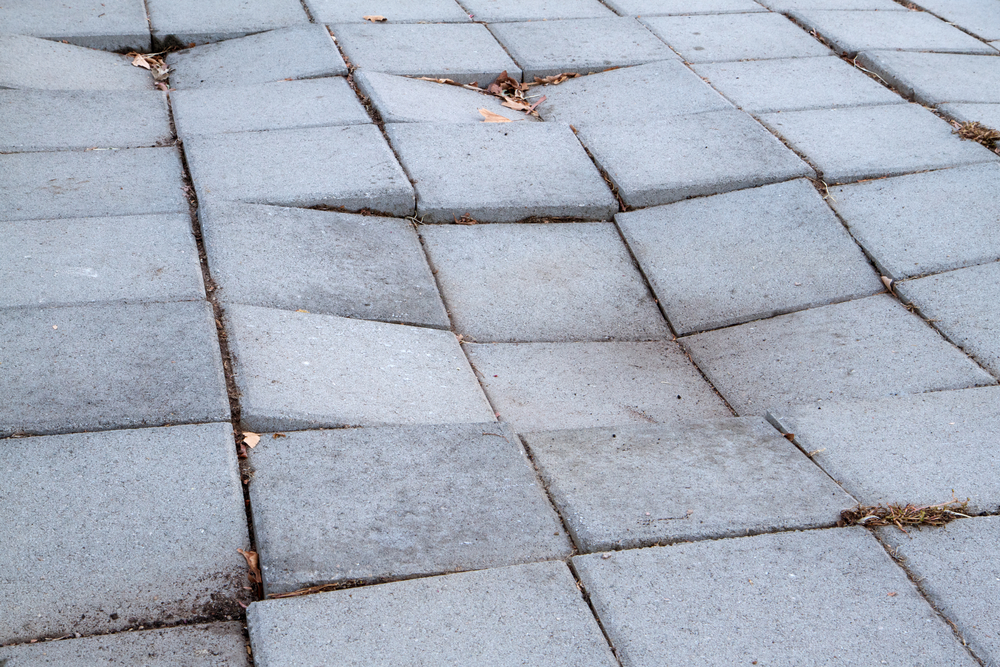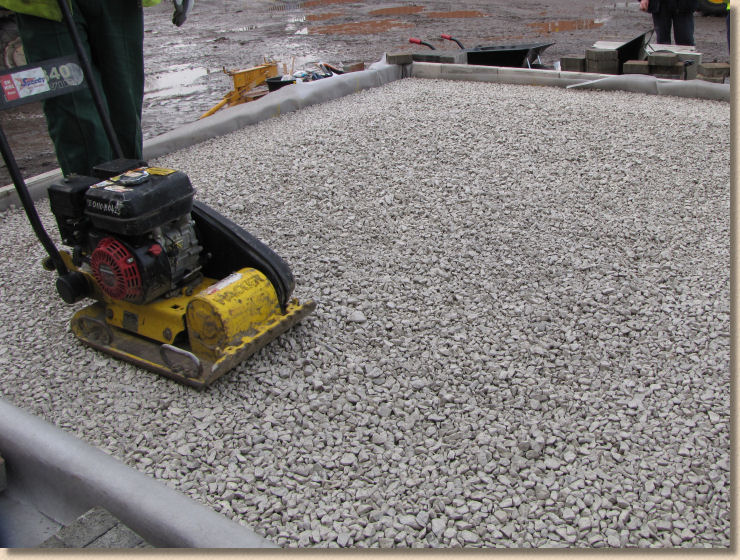
A lot of our landscaping repair work in Victoria BC involves interlocking pavers. We’ve done repairs for walkways, patios, and driveways. A common problem is sinking or elevation of the paver bricks over time. This is a short article on some ways to prevent these problems from occurring and to avoid having to call a landscaper every couple of years.
What is Vertical Movement?
Vertical movement entails sinking of the pavers or lifting of the pavers.
Sinking occurs due to two main reasons. One, an excess load is placed on top and just like putting too much on a car, it will sink from excess pressure. Obvious examples of this is offloading a dump truck onto a driveway designed for small vehicles or parking vehicles on paver walkways. Something that people often do that they don’t realize is just as bad is placing a hot tub on their paver patio. The weight and concentration on the pressure points of a Jacuzzi is almost comparable to a small car. This is due to the high weight per volume ratio of water and the contact areas being smaller than that of 4 tires. Thus there is less surface area for the pressure to be distributed.
Pavers, however, can also lift over time. This happens usually due to water pushing sediments up under the bricks or when excess weight is put in one area and it pushes up neighboring bricks.
Remedies

So what does your landscaper normally do during installation to prevent your investment? The biggest factor is having a proper base. This means having the right depth and compaction. For driveways and other surfaces expected to take on thousands of lbs of weight, 8” of road base minimum should be used as the foundational material. This material must also be compacted (with a machine not a hand tamper) in 4” lifts else the pressure will not be sufficient to compact all 8”at once. Having the correct type of gravel (road base) is also crucial to ensuring that there will be good drainage as gravel promotes drainage. For surfaces requiring less weight, such as a walkway or an average paver patio, 4” of road base is sufficient. It is also equally important to compact the soil underneath before the gravel is applied.
Having proper sloping during installation will also ensure that water will drain correctly away from certain areas. The less erosion and heavy runoff, the less chance of the sand and gravel being washed away, causing bricks to sink.
Finally, ensuring appropriate loads are used and not overloading structures. Every structure has tolerances and limits. Putting a heavy truck on a paver surface meant for pedestrian traffic will cause it to sink. For similar reasons one would not park a semi on one’s driveway lest it crack and sink from excess weight.
Conclusion
This should help you in doing your own installs or using your paver surfaces appropriately. If you are already experiencing sinking or lifting of your paver surface and need a local landscaper to do a quick affordable repair, give us a shout. Fixes are generally fairly quick and when done properly, should ensure your interlocking pavers last a good long time.